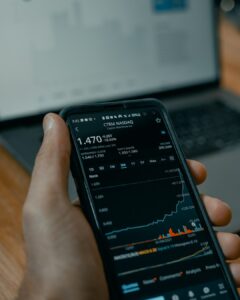Minimizing Risk in Forex: The Role of Technical Analysis
The foreign exchange market, commonly known as forex, is the largest and most liquid financial market in the world. With trillions of dollars being traded daily, it offers tremendous opportunities for profit. However, forex trading is not without its risks. The volatile nature of the market can lead to substantial losses if not approached with caution. This is where technical analysis plays a crucial role in minimizing risk.
Technical analysis is a method of evaluating financial markets by analyzing historical price and volume data. It aims to identify patterns, trends, and potential future price movements. By studying charts and using various indicators, traders can make informed decisions and manage their risk effectively.
One of the primary benefits of technical analysis is its ability to provide traders with a better understanding of market trends. By analyzing price charts, traders can identify support and resistance levels, which are key areas where price tends to reverse or consolidate. This knowledge helps traders make more accurate predictions about future price movements and adjust their trading strategies accordingly.
For example, if a currency pair has been consistently trading within a range and reaches the upper limit of that range, a technical analyst might anticipate a pullback in price. Armed with this knowledge, a trader can choose to sell the currency pair near the resistance level to take advantage of the potential downward movement, thus minimizing risk.
Technical analysis also helps traders identify potential entry and exit points. By using indicators such as moving averages, oscillators, and trend lines, traders can determine when a market is overbought or oversold. This information allows them to enter a trade at a favorable price and exit before a reversal occurs, reducing the risk of losses.
Moreover, technical analysis provides traders with tools to manage their risk through the use of stop-loss orders. A stop-loss order is a predetermined level at which a trader will exit a trade to limit potential losses. By placing a stop-loss order based on technical analysis, traders can protect their capital and ensure that any losses are kept within acceptable limits.
In addition to trend identification and risk management, technical analysis also helps traders with trade timing. By using various indicators, traders can identify potential trend reversals or continuation patterns. This information can be used to time trades more effectively and increase the probability of success.
However, it is essential to note that technical analysis is not foolproof. Like any trading strategy, it has its limitations and should be used in conjunction with other forms of analysis. Fundamental analysis, for example, can provide valuable insights into the underlying economic factors that drive currency movements.
Furthermore, technical analysis is subjective and open to interpretation. Different traders may have different interpretations of the same chart pattern or indicator. Therefore, it is crucial for traders to develop their own trading plan and risk management strategy based on their understanding of technical analysis.
To conclude, minimizing risk in forex trading is of utmost importance to ensure long-term success. Technical analysis plays a vital role in achieving this objective by providing traders with insights into market trends, potential entry and exit points, and risk management tools. By combining technical analysis with other forms of analysis and adopting a disciplined approach, traders can significantly reduce the risks associated with forex trading and increase their chances of profitability.





